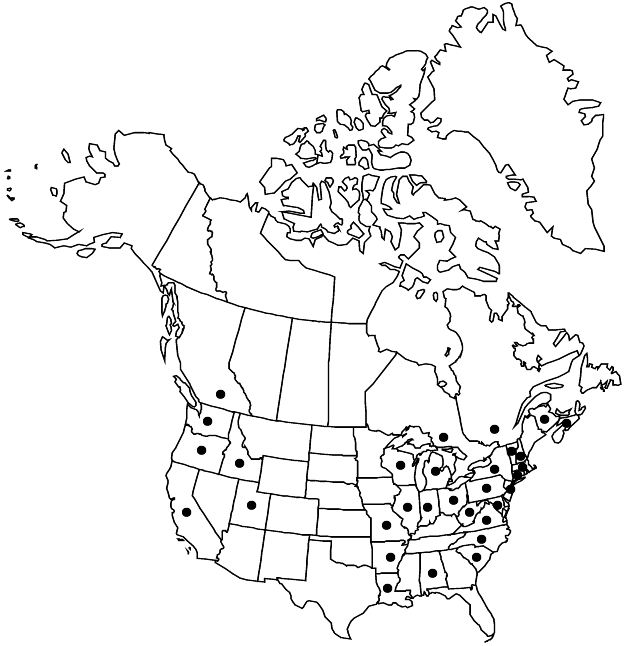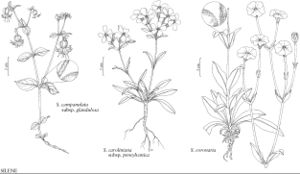Difference between revisions of "Silene coronaria"
Man. Herbor. Suisse, 145. 1811.
FNA>Volume Importer |
FNA>Volume Importer |
(No difference)
| |
Revision as of 20:08, 24 September 2019
Plants perennial, grayish white-tomentose, eglandular; taproot slender to stout; caudex branched, slightly woody. Stems several, erect, branched distally, stout, 40–100 cm. Leaves: basal blade oblanceolate, spatulate, 5–10 cm × 10–25(–30) mm, margins entire, apex acute, apiculate, with tuft of white hairs; cauline in 5–10 pairs, sessile, reduced distally, blade with both surfaces obscured by dense, silky, grayish-white tomentum. Inflorescences with 1–several dichotomies, several-flowered, open, bracteate; branches ascending, elongate; bracts leaflike, 10–20 mm. Pedicels straight, stout, to 10 cm. Flowers ca. 35 mm; calyx thickly 10-veined, obovate, ca. 15 × 10 mm in fruit, margins dentate with 5 narrowly lanceolate lobes ca. 1/4 length of tube, tomentose; corolla rich magenta-pink, sometimes white, clawed, claw equaling calyx, limb spreading horizontally, broadly obovate, shallowly 2-lobed, appendages 2, narrow, 2–4 mm; stamens equaling claw; stigmas 5, equaling claw. Capsules equaling to tightly enclosed within calyx, obovate-elliptic, ca. 14 mm, opening by 5 spreading, lanceolate teeth; carpophore ca. 2 mm. Seeds grayish brown, reniform-rotund, plump, 1–1.5 mm, coarsely verrucate. 2n = 24.
Phenology: Flowering summer.
Habitat: Roadsides, fields, waste or rocky places
Elevation: 0-300 m
Distribution

B.C., N.B., N.S., Ont., Que., Ala., Ark., Calif., Conn., Idaho, Ill., Ind., La., Md., Mass., Mich., Mo., N.H., N.J., N.Y., N.C., Ohio, Oreg., Pa., S.C., Utah, Vt., Va., Wash., W.Va., Wis., Europe.
Discussion
Silene coronaria is commonly cultivated and occasionally escapes.
Selected References
None.
